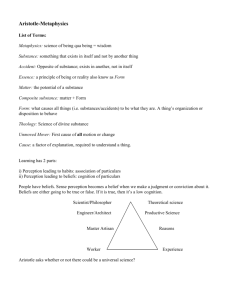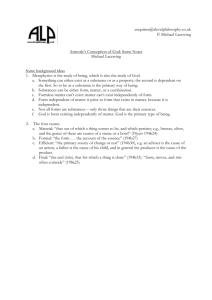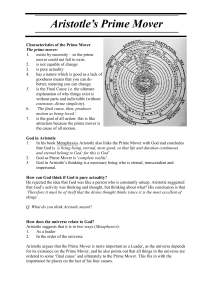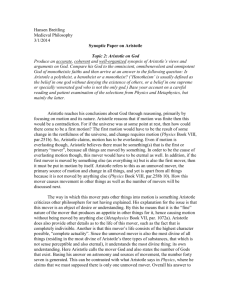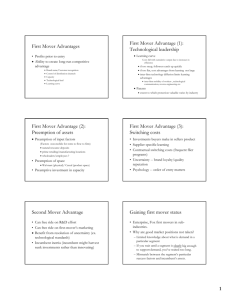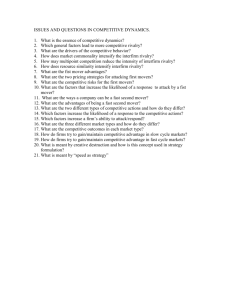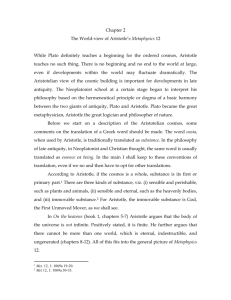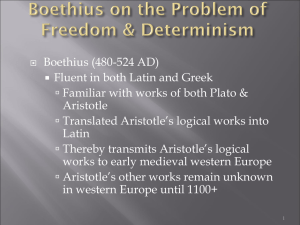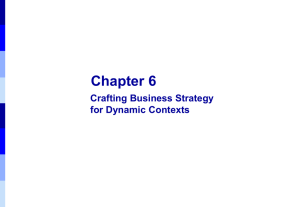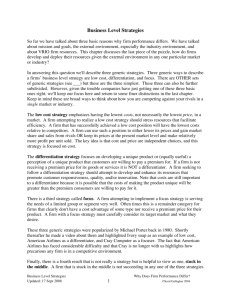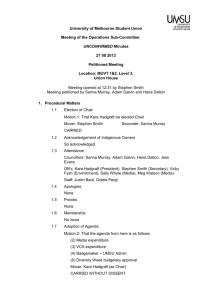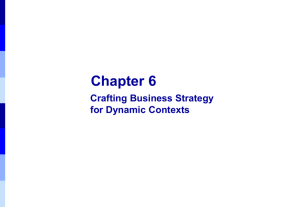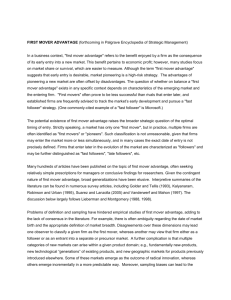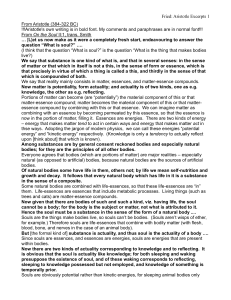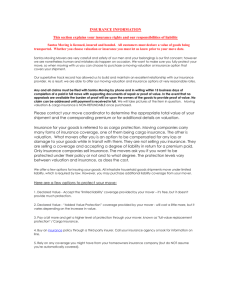Structure-of-Physics-VIII.5
advertisement
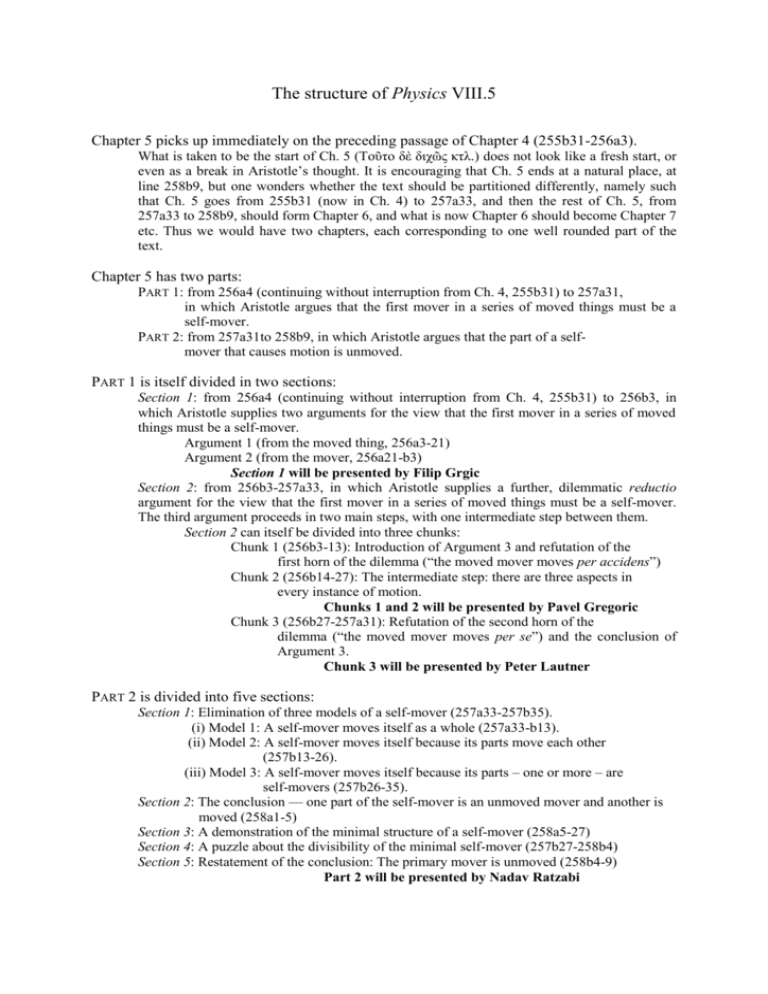
The structure of Physics VIII.5 Chapter 5 picks up immediately on the preceding passage of Chapter 4 (255b31-256a3). What is taken to be the start of Ch. 5 (Τοῦτο δὲ διχῶς κτλ.) does not look like a fresh start, or even as a break in Aristotle’s thought. It is encouraging that Ch. 5 ends at a natural place, at line 258b9, but one wonders whether the text should be partitioned differently, namely such that Ch. 5 goes from 255b31 (now in Ch. 4) to 257a33, and then the rest of Ch. 5, from 257a33 to 258b9, should form Chapter 6, and what is now Chapter 6 should become Chapter 7 etc. Thus we would have two chapters, each corresponding to one well rounded part of the text. Chapter 5 has two parts: PART 1: from 256a4 (continuing without interruption from Ch. 4, 255b31) to 257a31, in which Aristotle argues that the first mover in a series of moved things must be a self-mover. PART 2: from 257a31to 258b9, in which Aristotle argues that the part of a selfmover that causes motion is unmoved. PART 1 is itself divided in two sections: Section 1: from 256a4 (continuing without interruption from Ch. 4, 255b31) to 256b3, in which Aristotle supplies two arguments for the view that the first mover in a series of moved things must be a self-mover. Argument 1 (from the moved thing, 256a3-21) Argument 2 (from the mover, 256a21-b3) Section 1 will be presented by Filip Grgic Section 2: from 256b3-257a33, in which Aristotle supplies a further, dilemmatic reductio argument for the view that the first mover in a series of moved things must be a self-mover. The third argument proceeds in two main steps, with one intermediate step between them. Section 2 can itself be divided into three chunks: Chunk 1 (256b3-13): Introduction of Argument 3 and refutation of the first horn of the dilemma (“the moved mover moves per accidens”) Chunk 2 (256b14-27): The intermediate step: there are three aspects in every instance of motion. Chunks 1 and 2 will be presented by Pavel Gregoric Chunk 3 (256b27-257a31): Refutation of the second horn of the dilemma (“the moved mover moves per se”) and the conclusion of Argument 3. Chunk 3 will be presented by Peter Lautner PART 2 is divided into five sections: Section 1: Elimination of three models of a self-mover (257a33-257b35). (i) Model 1: A self-mover moves itself as a whole (257a33-b13). (ii) Model 2: A self-mover moves itself because its parts move each other (257b13-26). (iii) Model 3: A self-mover moves itself because its parts – one or more – are self-movers (257b26-35). Section 2: The conclusion — one part of the self-mover is an unmoved mover and another is moved (258a1-5) Section 3: A demonstration of the minimal structure of a self-mover (258a5-27) Section 4: A puzzle about the divisibility of the minimal self-mover (257b27-258b4) Section 5: Restatement of the conclusion: The primary mover is unmoved (258b4-9) Part 2 will be presented by Nadav Ratzabi
